The Girl Who Knew Too Much (1963)
Directed by: Mario Bava
Written by: Eliana De Sabata, Ennio De Concini, Enzo Corbucci, Franco Prosperi, Mario Bava, Mino Guerrini
Starring: John Saxon, Letícia Román, Titti Tomaino, Valentina Cortese
AKA LA RAGAZZA CHE SAPEVA TROPPO
Italy
AVAILABLE ON BLU-RAY AND DVD
RUNNING TIME: 82 min/ 85 min [US version entitled THE EVIL EYE]
REVIEWED BY: Dr Lenera, Official HCF Critic
On holiday, Nora Davis arrives in Rome to visit her elderly ailing aunt, but she dies on the first night of her visit. As she walks to the nearby hospital to notify Dr. Marcelo Bassi who had been treating her, she is mugged and knocked out. When she wakes up, she sees the body of a dead woman lying on the ground near her, and a bearded man pulling a knife out of the woman’s back. The police don’t believe her when they find no evidence and think she’s hallucinating. Later, Nora meets a close friend of her aunt’s, Laura Torrani, who lives in a house right where Nora had her scary experience. Laura tells her that ten years ago, a murder did occur in the same place, but Nora comes across newspaper clippings of articles on a serial killer dubbed the “Alphabet Killer” due to hiM having alphabetically killed people according to their surnames. The killer has already murdered victims whose last names begin with “A,” “B,” and “C,” respectively….
Even if it was Dario Argento who really popularised the form in 1969, it was Mario Bava who with two movies virtually invented the giallo. One of them was Blood And Black Lace, which I reviewed not that long ago. The other was made two years before that film and is far less known and seen today, but is just as important a movie. In fact, if you combined Blood And Black Lace with The Girl Who Knew Too Much you basically have your archetypal giallo, and indeed Argento virtually did that with The Bird With The Crystal Plumage, which really does borrow a fair bit from The Girl Who Knew Too Much in particular. Blood And Black Lace brought in the gruesome deaths and the sleaze, but The Girl Who Knew Too Much introduced the basic plot structure and elements which would be later rehashed over and over again. I had only seen this one once before and remember being hugely disappointed in it. Viewing it again, I wondered if I’d seen a different film, because it really holds up as an enjoyable, cleverly plotted suspenseful mystery with black and white film noir-style photography that is simply stunning in what was Bava’s second and last film in black and white. Certain elements don’t entirely work though and the film is a little uneven, as if a light comedy thriller is struggling with a darker, more serious effort to take over the film and the two not entirely mixing well.
The film was the first of several collaborations between American International Pictures [AIP], who had made lots of money distributing Bava’s Black Sunday, and Italy’s Galatea films. Though the films would be shot in Italy, AIP would supervise and in some cases make script alterations for the American cuts which would often contain material not in the Italian version [and vice versa]. Bava had to be coaxed into making The Girl Who Knew Too Much by AIP because six months before he had taken a break from filmmaking, prompted by a nervous collapse due to exhaustion, and planned to just be a cinematographer. This film was originally intended as a very light affair indeed but Bava felt that the screenplay by….take a deep breath….Enzo Corbucci, Ennio De Concini, Eliana De Sabata, Mino Guerrini and Franco Prosperi was weak and altered it to make it less frivolous and gain some weight. Star Leticia Roman got co-star John Saxon to appear in the film by telling him she would appearing in a “horror movie”, though he thought she meant “art movie” . The disappointed Saxon and Bava didn’t get on, possibly because Saxon thought that Bava thought that he wanted to be in the film because he was Roman’s boyfriend, which he wasn’t. Though filming wrapped in May, some reshoots were required by AIP and were done at the end of the year. The two versions differ considerably and I will look at The Evil Eye at the end of this review, which will be mostly of The Girl Who Knew Too Much. The film was Bava’s least commercially successful ever, only lasting one week in Italian cinemas. Overseas it did okay but wasn’t released in the UK until 1965 in a double-bill with another two-year-old film, The Comedy Of Terrors.
Now something right away that is both a bit strange and a bit annoying is the occasional narration that opens the film to set the scene and which returns a few times later on. Obviously intended as a sly comment on the action as well as sometimes telling us what Nora is thinking, it’s intrusive, but the film would lose something if it was removed. We first meet our heroine on her plane to Rome, being chatted up by a man who gives her a box of cigarettes. At the airport, the man is grabbed by police who find marijuana cigarettes hidden in his bag. What made me chuckle was that, even though it was more implied, Nora appeared to smoke one of them on the plane, something I couldn’t understand that the film subsequently ignored, though it’s eventually referred to again in the final scene. Things soon get more serious with her aunt’s death, and the film suddenly becomes chilling with lots of thunder and the creaky sound of the aunt’s bed wobbling [despite the black and white, what with a cat and a dropped glass too, it’s all rather similar to that terrifying The Drop Of Water segment in Bava’s Black Sabbath]. What’s odd is that all this has no bearing on what follows except to establish Nora’s sense of paranoia. Then we get the scene where Nora is knocked out and awakens to see what seems to be the aftermath of a murder. Unusually Bava lets Nora and us see what appears to be the murderer’s face, and, very audaciously, lets us see that a picture of the killer is inside a mysterious looked room a few scenes later!
The first two thirds of The Girl Who Knew Too Much really are quite something. The viewer is constantly manipulated, even being led at one point to wonder if Nora not only imagined the killing but may have time travelled! She seems like a genuinely mad figure at times, especially when, back at the square where she was found, she hysterically describes what supposedly happened. The person she tells all this to is the friendly Dr. Marcelo Bassi, and as the two investigate the mystery they also embark on an tentative romance amidst a surprising [considering that Bava hardly ever went in for this sort of thing] amount of travelogue shots of Rome. However, it’s the set pieces that dominate, where Bava display his mastery of creating suspense the equal of Alfred Hitchcock [an obvious major influence on this movie, and not just in its title]. Nora tries to get into the locked room and there seems to be somebody inside, whereupon she sets an elaborate trap for the killer, but this extremely tense scene is bettered by a later one where Nora is told to meet someone in an empty apartment block, resulting in a really dreamlike bit where it really does seem as if Nora is going insane, with its all white setting and swinging lamps, yet we also feel that she’s in great danger. Bava really showed he was able to transfer his usual aesthetic to a somewhat more realistic world with The Girl Who Knew Too Much.
Having worked up a sweat, things eventually slump a little and the climax is rather rushed, after which we get that afore-mentioned cheeky ending when that box of cigarettes reappears and ends up in the possession of a priest! There are humorous bits throughout the film, some of which work, but too many scares are revealed to be false and go for laughs, from Marcelo becoming trapped by Nora’s attempt to trap the killer, to Marcelo advancing menacingly towards Nora, seemingly the killer, saying: “It’s time to get on with it”, before grabbing her and kissing her instead, though this does tie in with, as does much of the movie, Bava’s favourite theme of deceptive appearances, while his fascination with greed also features prominently, but the light and dark elements of the story don’t always mesh. His monochrome cinematography, where forms of black and white almost seem to chase each other around the screen, is extraordinary though and is worthy of the greatest film noir, though seems as much influenced by German expressionism. Nora’s face is at times only half-lit to stress her confusion, while in other set-pieces dark figures stand out menacingly against fully lit backgrounds. There are some individual shots of sheer brilliance, like a transition from night to day done as a reflection of a church in a pool. You only notice the join when you rewind the shot. Another transition at a funeral has people just vanish onscreen as we move to the funeral’s aftermath. And let’s not forget the flashback in extreme soft focus done mainly as still frames, or the introduction of one scene seeming to be a shot of a large flower, only for it to be revealed as nun’s head garments! Meanwhile the narrative does make sense, just about, and Marcelo and Nora are a likeable couple, even though she tends to accidentally injure him often!
Bava once said of this film: “Perhaps it could have worked with James Stewart and Kim Novak, whereas I had…oh, well, I can’t even remember their names”, but, while John Saxon is rather stiff, Leticia Roman gives one of the best performances ever in a Bava film, almost equal to Daliah Lavi’s in The Whip And The Body, if playing a simpler part. She’s appropriately vulnerable, but you also feel that she’s no pushover even when you think she may be losing it. Dante di Paolo, who happens to be George Clooney’s uncle, also leaves an impression as a sinister guy following our couple who turns out to be a cop with his own reasons for solving the mystery and with some information that just might help matters. Footage from this film was used in the HBO series Unscripted to show Di Paolo’s character’s Hollywood past. Roberto Nicolosi’s score is often breezy and jazzy. The title song is a catchy tune and is repeated throughout, sometimes as source music. The Girl Who Knew Too Much probably disappoints some viewers, especially those who have seen some of the many later giallos which virtually replaced the spaghetti western in Italy in the first half of the 1970’s. It’s quite tame in its violence for a start – in fact, you only see the aftermaths of the murders that take place in it. However, that doesn’t mean that it’s any less worthy of respect. Yes, it’s a little stiff and uneven, but contains plenty to enjoy and appreciate in its own right. And God, that cinematography is to die for.
Rating: 









The AIP cut of The Girl Who Knew Too Much, which is actually three minutes longer, works surprisingly well. I expected something far inferior to the Italian version, and got something that even works better in some parts. Instead of an anonymous male narrator, we get Nora narrating her own thoughts, which is occasionally overdone but generally comes off better. The opening scene is now a long take where we pass some of the other passengers in the plane and hear their thoughts too. We don’t get the references to drugs [though the same man is arrested at the airport for smuggling something], which means that the Italian version’s final scene is gone. Added though is a brief scene with an actor, an extended scene of Marcelo and Nora on the beach where they roll into the sea, and a totally unexpected but funny coda to the final moment of Marcelo and Nora where he says he’ll marry her if she stops reading murder mysteries and right beside them a man catches his wife with another man and shoots him! And best of all, there’s a cameo by none other than Bava himself, as a face on a picture whose eyes follow Nora around the room!
Saxon dubs his own voice and most of the cast are mouthing English anyway, which helps. Unfortunately this cut is saddled with a score by Les Baxter which is often intrusive and heavy handed compared to Roberto Nicolosi’s effort, often appearing unnecessarily in bits which Nicolosi had left un-scored. Overall though, this version has a lighter feel than the original but is a decent watch in its own right. AIP certainly didn’t ruin the film.


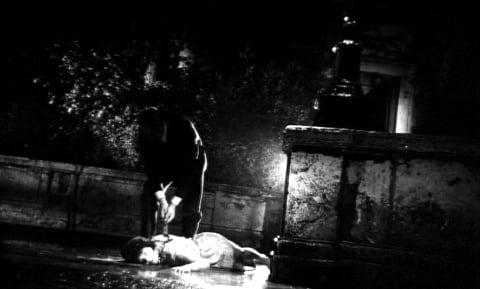
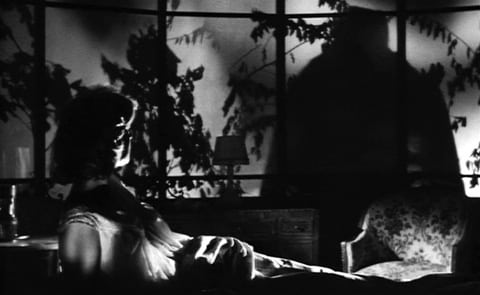
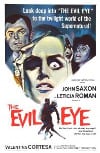

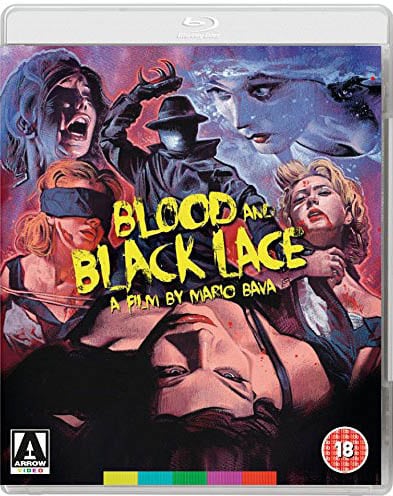
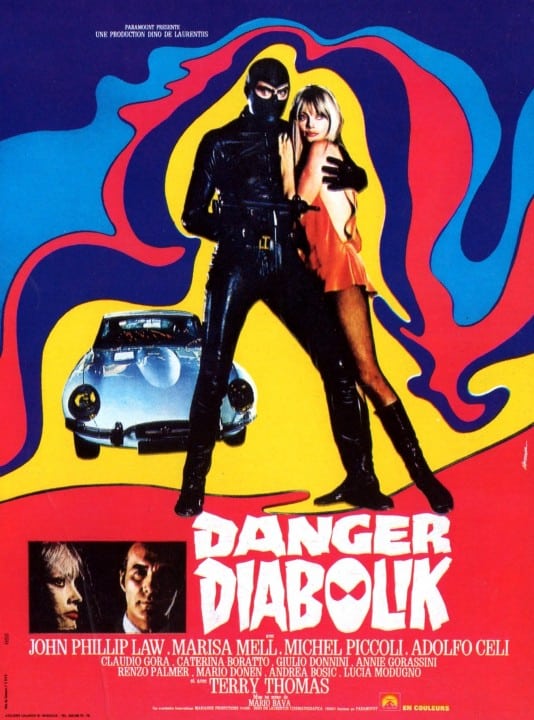

Be the first to comment